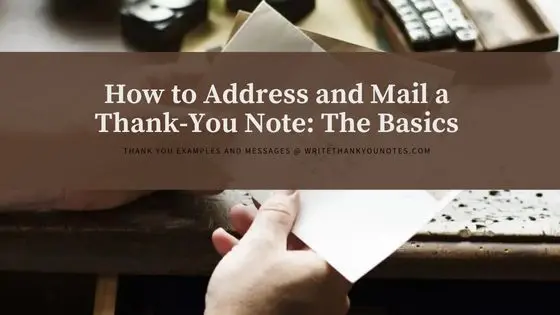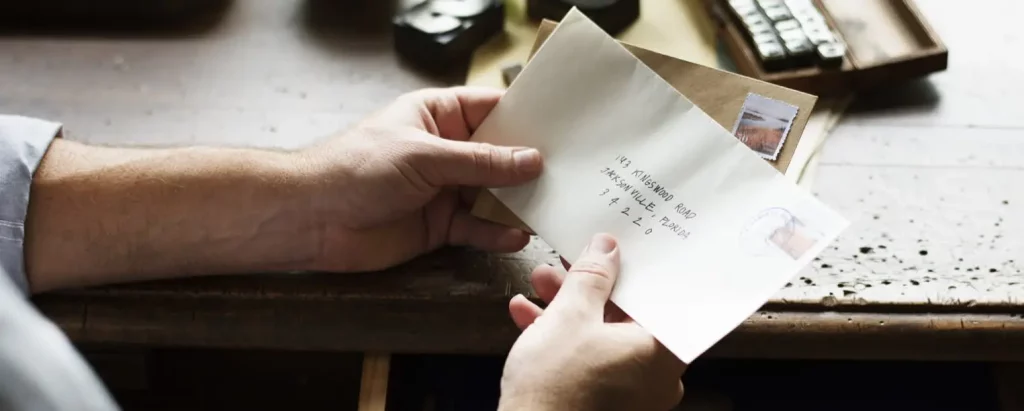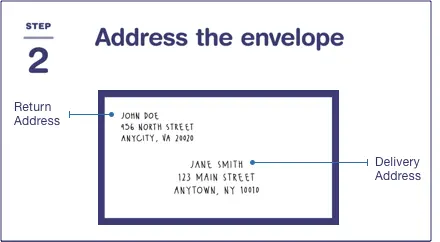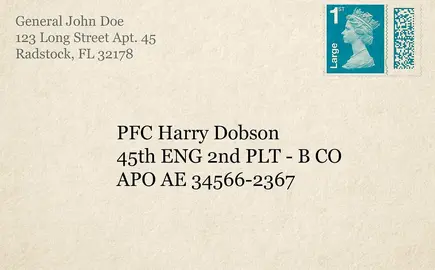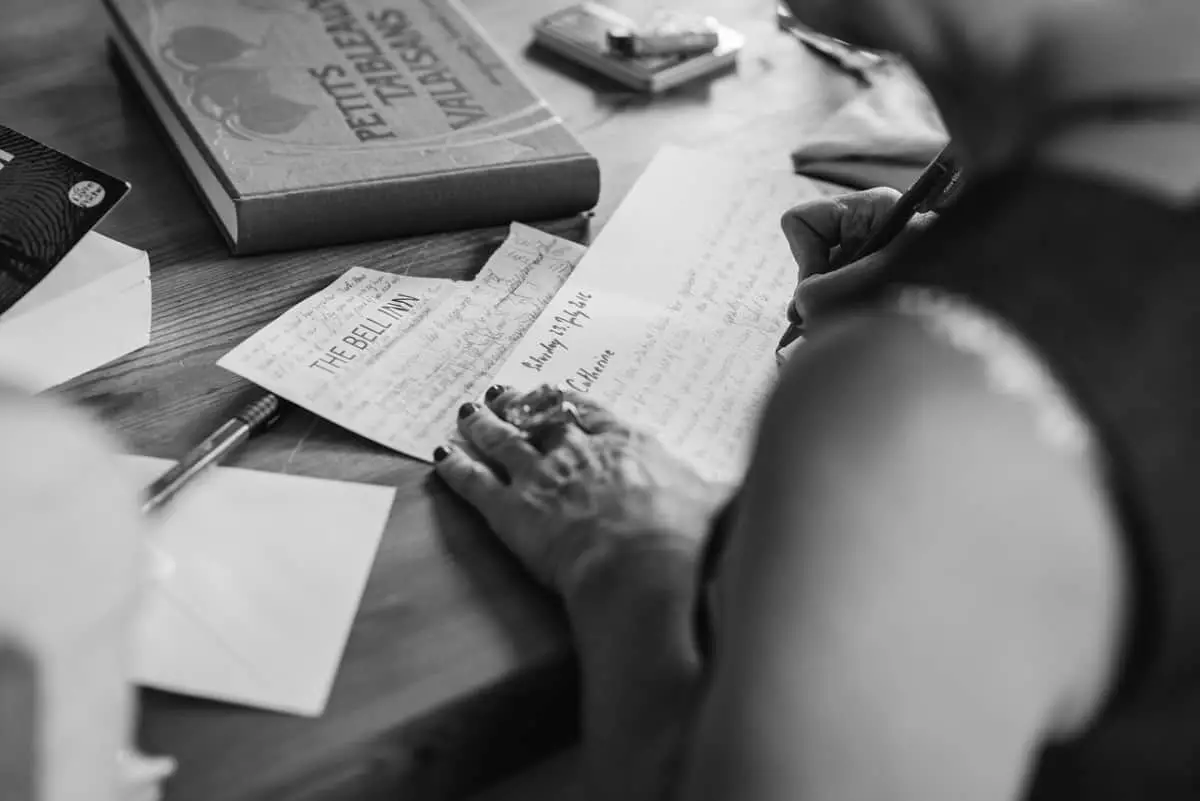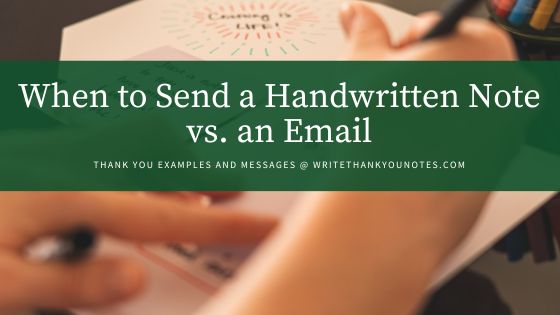Thank-you notes are a great way to show your appreciation for a gift, gesture, or kind words. Writing and sending a thank-you note can be a special way to express your gratitude and let someone know you appreciate them.
However, knowing how to properly address and mail a thank-you note can be tricky. Here’s a guide on how to address and mail a thank-you note correctly.
We’ll cover:
- Information on etiquette,
- how to properly address and mail a thank-you note,
- addressing the envelope, and
- choosing the right postage.
Thank-you Note Mailing Etiquette
After you’ve written your perfect thank-you note, take the same care in mailing it promptly.
It is considered proper etiquette to send the thank you note within a few days of receiving the gift or kind gesture. Read more etiquette tips.
The final touches are important; address the card legibly and carefully (spell their name(s) correctly!) and write the address on the centre of the card.
Handwritten thank-you notes are the most personal and appropriate way to show your appreciation. If you also send an email thank-you note, remember that the digital version of a thank-you note should still be thoughtful and heartfelt.
How to Address a Thank-You Letter Envelope: A Comprehensive Guide
When addressing the envelope of your thank-you note, it is important to make sure the recipient’s name and address are written correctly.
This guide will provide you with tips and advice on how to properly address an envelope so that your mail will get to where it needs to go.
Formatting the Recipient Address
The first step in addressing an envelope is formatting the address. Preferably the address should be written in all capital letters, usually in a non-cursive font, and should include the recipient’s name on the first line. Use a black or blue pen.
Keep in mind that the mail sorting machines read the address from the bottom up, so format the address in a predictable way to avoid delaying delivery.
Address Abbreviations
When writing out the address, it is important to use the correct abbreviations to save space. Common abbreviations:
- ST for Street,
- AVE for Avenue,
- RD for Road,
- DR for Drive, and
- PL for Place.
- For states and provinces, use the two-letter abbreviation.
Addressing Women
- Girls under 18 should be Miss ( Miss Amy Flynn).
- Single women over 18 or married women who use their maiden name, address as Ms. ( Ms. Pam Gilmour).
- Addressing divorced and separated women with the correct title can be tricky, but Ms. is usually the safest option if you’re unsure of their preference. It’s important to use their maiden name when using Ms., if they’ve returned to it (e.g. Ms. Susan Thompson). Avoid using the husband’s name in the title (e.g. Ms. Susan Rourke (married name)).
- For widowed women, it is traditional to use Mrs. and her late husband’s first and last names ( Mrs. Robert Manson).
- If addressing a married woman who uses her husband’s last name (but his name is not included on the envelope), it’s traditional to use Mrs. followed by her husband’s first name, but using her first name is also correct and may feel more appropriate depending on the scenario ( Mrs. John Doe or Mrs. Julie Doe).
Addressing Couples
- Married couples are usually addressed as the masculine form ( Mr. and Mrs. Bill Narrow).
- Married couples who use different last names should use Ms. and Mr. with full names, joined by “and” ( Ms. Ellen Johns and Mr. George Johns), however, the order is not strict.
- Unmarried and same-gender couples who live together should follow the same rule. If both names do not fit on one line, they should be written on two separate lines without the “and,” either with whomever they are closer to listed first or with same-gender couples listed alphabetically by last name (e.g., Ms. Gracie Newton and Mr. Norm Law or Ms. Mary Mack followed on the next line by Ms. Tracy Zweilert).
Addressing a Family
When addressing an envelope to an entire family, it is best to use the masculine form of the family name, i.e. Mr. and Mrs. Jones.
- Children under 18 should be listed on the line below their parents’ names, in age order, without titles or last names ( Mr. and Mrs. Bob Mitchell (followed on the next line:) Presley, John, and Melvin).
- For less formal correspondence intended for the whole family, the above method is perfectly fine, or you can address the family as a whole using the father’s first and last name ( The Bing Partridge Family).
- A helpful reminder for making last names plural: You should not address a family this way, but you may use it in the return address on your envelope (or when signing your holiday card). Simply add s or -es to the last name—without any apostrophes. For example, if the last name is Smith, you would write Smiths. If the last name is Jones, you would write Joneses.
- Note: for wedding invitations, it’s important to be explicit about what members of a household are invited via the names on the envelope.
Addressing a Person with a Courtesy Title
When addressing an envelope to a person with a courtesy title, such as a doctor or reverend, use the title and the person’s full name. For example, if the person’s name is Dr. John Smith, the envelope should be addressed to Dr. John Smith.
- For couples, whoever has the higher ranking title should be listed first ( The Honorable Sue Manchin and Mr. Bob Dole).
- If both have the same title and share a last name, most titles can be made plural ( The Doctors Ritchie or Drs. Sue and Bob Dole).
- If both have different titles or the same title but different last names, distinguish each full name with a relevant title, joined by “and” ( The Reverend Matthew Hicks and Dr. Elly Smith or Dr. Matthew Hicks and Dr. Elly Smith).
Addressing the Military
When addressing an envelope for someone who is in the military, use the following format:
Rank Name
Unit and Box Number
APO/FPO/DPO (Air/Fleet Post Office/Diplomatic Post Office)
City, State, ZIP Code
Addressing a Business
When addressing an envelope to a business, use the company’s full name and include the department, if applicable. If the business has a suite or floor number, include that as well.
Addressing an Envelope to Multiple People
When addressing an envelope to multiple people, list each person’s name on a separate line.
Family: When addressing an envelope to multiple recipients with the same last name at the same address, the first line should read the family name, such as ‘The Family of Mr. and Mrs. John Doe’ or ‘The Doe Family.’ This informs the recipients that the mail is intended for everyone belonging to that family.
You could also write “To the residents at [address]”.
Business: If the recipients are part of a business, you can replace ‘residents’ with the appropriate titles, such as ’employees,’ ‘supervisors,’ or ‘owners’ of the listed address. If there are not too many recipients, you can list their names on a single line. For example, ‘Mr. John Doe, Mrs. Jane Smith, Ms. Mary Mack, Mr. Jack Black.’
If there are more than will fit on one line, continue on an equally aligned second line without using the word ‘and.’ If there are still more, it is best to refer back to writing a more general group name such as ‘The Family of…’ or ‘The Doe Family’ or ‘The [Business Name] Family’
Addressing the Return Envelope
When addressing a return envelope, use the same address format as you used for the main envelope. Be sure to include the proper postage and a return address in the top left corner on the front of the envelope.
Addressing International Mail
If the envelope is being sent internationally, it is important to include the country name in the address. Additionally, be sure to check with the destination country for any additional requirements for international mail.
By following these tips and advice, you can be sure that your mail will reach its destination safely and quickly. With a little bit of attention to detail, you can make sure your mail gets to where it needs to go.
Choosing the Right Postage
The amount of postage you need depends on the weight of the envelope. You can use a postage calculator to determine the right amount of postage for your thank-you note, or mail it from a post office and the clerk will apply the proper postage. Usually, the letter will require just one letter-mail stamp if sent domestically.
Sending Your Thank-You Note
Check things over: make sure the envelope is sealed properly, and that the address is written clearly and legibly. You should also make sure that you have included a return address on the envelope (usually in the top left corner) in case the thank you note needs to be returned.
By following these steps, you can make sure that your thank-you note is properly addressed, mailed, and received. Writing a thank-you note is a great way to show your appreciation and let someone know that you are grateful for their kindness.
Once you have addressed the envelope and chosen the right postage, you can send your thank-you note with an appreciative heart. And away it goes!
